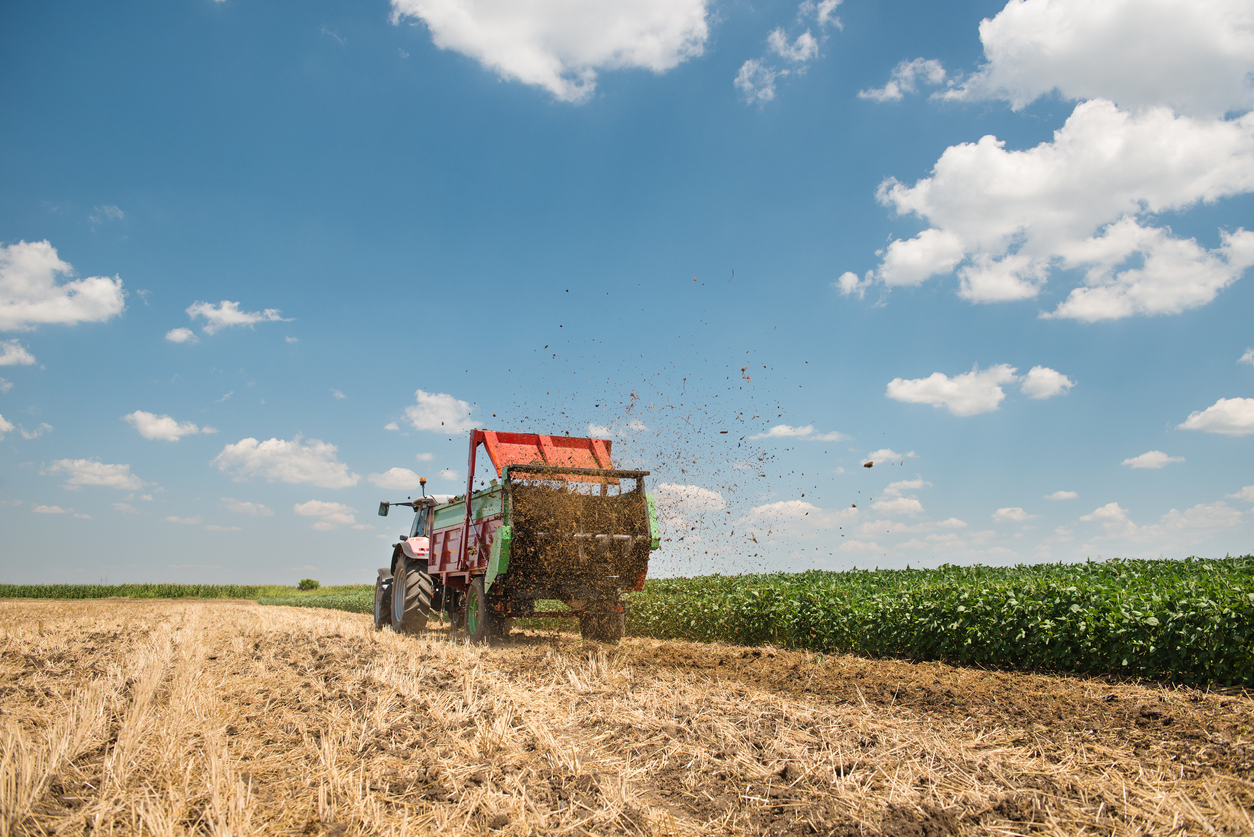Updated Manure Value
Manure is a valuable commodity to farmers for its fertilizer value and it beneficial role in feeding soil microbes and plants. As fertilizer prices have moderated, the value of manure has declined\ slightly, but its still a good product for the soil if put on thin with live plants (cover crops) to recycle it quickly. Manured fields on average have a yield increase of 4.4%. That adds value to any farm. To get the best results from manure applications, follow these recommendations
Manure should always be tested because nutrients values vary. Take a manure sample close to the date of application to get accurate results. Soil testing is also recommended to avoid over application. Pre-side dress nitrogen tests (PSNT) are commonly taken in the spring or early summer but take these tests close to manure application date. Weather, moisture, soil temperature, and overall soil microbial activity changes PSNT values tremendously.
To protect water quality, apply manure based on the phosphorus (P) plant needs to avoid over application of N. Target fields first with the lowest soil P , then the lowest K, then the lowest N based on soil test. Applying manure nutrients to fields that have high soil test values reduces the value of manure since those extra nutrients do not increase crop yields immediately. Applying manure at the lower P-rate means you may have to supplement your fields with additional commercial N fertilizer but it’s safer for the environment and utilizes your manure more efficiently.
The nitrogen (N) value of manure is usually the most difficult to determine due to expected storage and application losses. Solid or semi-solid N manure losses can be 20-40% in manure pack, 25-50% in deep pit poultry manure, and 25-50% in litter, 40-55% in open lots and 40-55%
in open lots. In liquid systems, pits under floors can have N losses of 15-30%, 10-30% in above ground tanks, 20-40% in holding ponds, and 70-85% in lagoons. In manure, only about 50% of the N may be available the first year, while generally 80-90% of phosphorus (P) and potassium (K) are available immediately. Source: Ohio Livestock Management Guide, Bulletin 604.
Valuing manure is based on the commercial value of N-P-K and any micronutrients. For simple analysis, current commercial fertilizer for actual N is around $0.40 to $0.60 (assume $0.50), actual P is $0.57 and actual K is $.42, all per pound. For poultry manure with 52# N, 72# P and 38# K per ton of solid manure, the maximum value for these three nutrients is $83 per ton.
However, N losses can be quite high so usually the manure value of N is reduced by 50-75% reducing the value of poultry manure to $64-$70 plus there are higher costs for applying manure. The price paid for manure is challenging and is usually negotiable. Depends upon who is hauling it, who is applying it, and how it is applied.
For dairy manure, pen pack values might be 7# N, 5.5# P, and 5# K depending on the amount of bedding resulting in a maximum value of $8.60 per ton. Again, the amount of bedding and moisture content varies. Liquid dairy manure from a holding pond might have an analysis of 19#
N, 14# P, and 14.4# K per 1000 gallons with a maximum value of $22.50 per 1000 gallons. Adjustments for N losses in storage, handling, and application losses and application costs reduces the manure value.
Similar analysis can be done for hog manure with pen pack values around 6.6# N, 6# P, and 5# K depending with a maximum value of $8.80 per ton. Liquid hog manure from a holding pond might have an analysis of 18# N, 16# P, and 13# K per 1000 gallons with a maximum value of
$23.60 without making any other adjustments (storage, handing, application) for manure value. Manure values were obtained from OSU Bulletin 604.
For corn production, corn removes about .37# P and .27# K per bushel. Based on a P-rate, a 200-bushel corn crop removes 74# P and 54# K. To replace the P with pen pack dairy manure (P=5.1#, K-5.2#) requires 14.5 ton but also supplies 75# K. Assuming 50% plant use of N in the manure, the dairy manure supplies about 50# N. On liquid dairy manure, 5,300 gallons of dairy manure supply the P needs but also add 76# K and about 47.7# N, based on 50% N loss. Manure is a valuable resource as a fertilizer but as you can see, putting a value on it can be difficult depending on many factors and assumptions.
